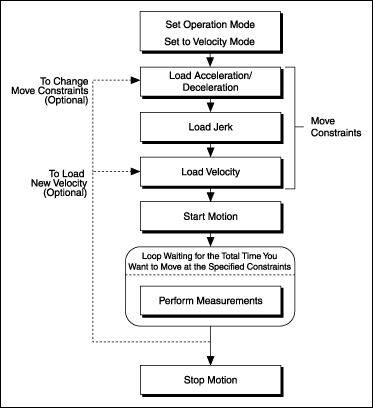Velocity-Based Straight-Line Moves
Some motion applications require moves that travel in a straight line for a specific amount of time at a given speed. This type of move is known as velocity profiling or jogging.
You can use a motion control application to move a motor at a given speed for a specific time, and then change the speed without stopping the axis. The sign of the loaded velocity specifies the direction of motion. Positive velocity implies forward motion and negative velocity implies reverse motion.
 |
Tip You can change the move constraints during a velocity move. |
Velocity-Based Straight-Line Move Algorithm
The following figure shows a generic velocity-based straight-line move algorithm applicable to both C/C++ and LabVIEW code.

Loading a second velocity and executing the Start Motion VI or function causes the motion controller to accelerate or decelerate to the newly loaded velocity using the acceleration or deceleration parameters last loaded. The axis decelerates to a stop using the Stop Motion VI or function. The velocity profile created in the example code is shown in the following figure.
